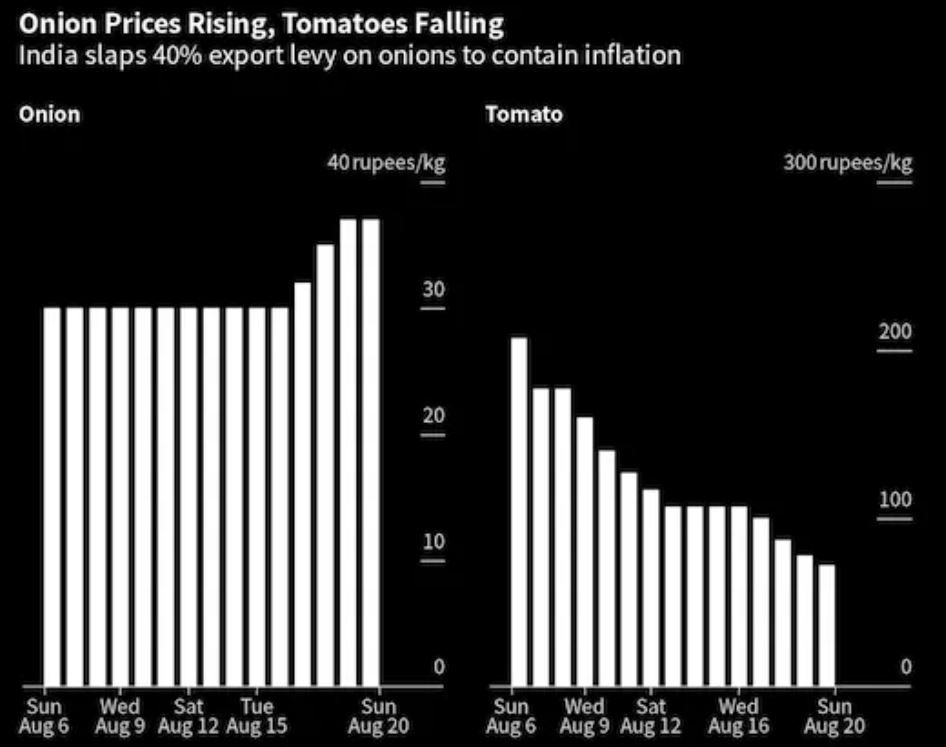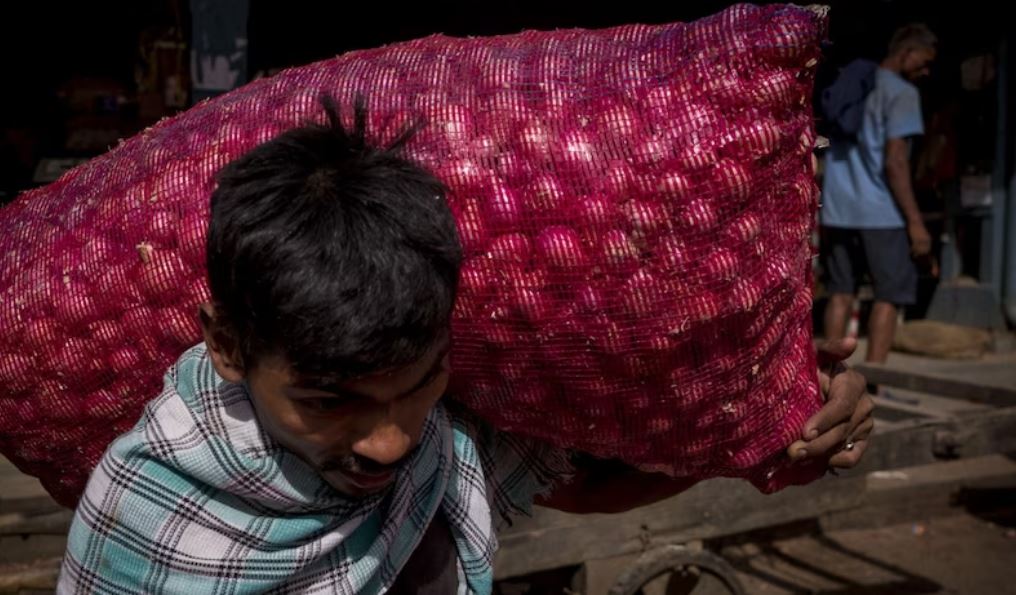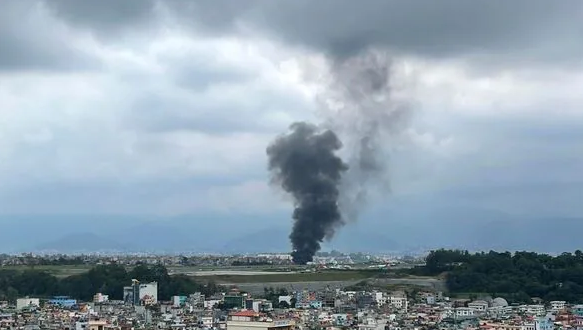“Concerns Mount as India Addresses Soaring Onion Prices and Food Inflation Ahead of Key Elections”
The Indian government, facing the challenge of rising food inflation and its potential impact on the upcoming national elections, has taken measures to address the steep increase in onion prices, which poses a greater risk than the recent surge in tomato costs. To manage the situation, India has implemented a 40 percent export tax on onions and plans to make them available domestically at subsidized rates.
This move reflects the significance of onions, along with tomatoes and potatoes, in the Indian diet, making them essential commodities that have historically influenced political outcomes due to price fluctuations caused by crop losses. Onions, in particular, hold a unique place in local cuisines, making them difficult to replace with other alternatives.

The government faced criticism when tomato prices skyrocketed by up to 700 percent due to heavy rains affecting key growing regions. Although tomato prices have started to decline, the steady increase in onion prices has raised concerns and prompted proactive measures. These actions coincide with rising costs for various agricultural commodities like wheat and rice due to adverse weather conditions.
For Prime Minister Narendra Modi, who aims to secure a third consecutive term in the upcoming elections, maintaining stable food prices is crucial. The current retail inflation is at a 15-month high, underscoring the magnitude of the challenge at hand. The government has already taken steps such as restricting exports of key commodities like wheat, rice, and sugar. There’s also consideration of removing the 40 percent tariff on wheat imports. In addition, the government has entered the open market to sell tomatoes and grain while also controlling the accumulation of certain crops in stockpiles.
Rahul Bajoria, an economist with Barclays Bank Plc, noted that the government’s actions regarding onions are preemptive, given the current price trends aligning with seasonal patterns. However, given the uncertain outlook for the end of the monsoon season, the government is focusing on the possibility of sustained high food prices in the coming months.



